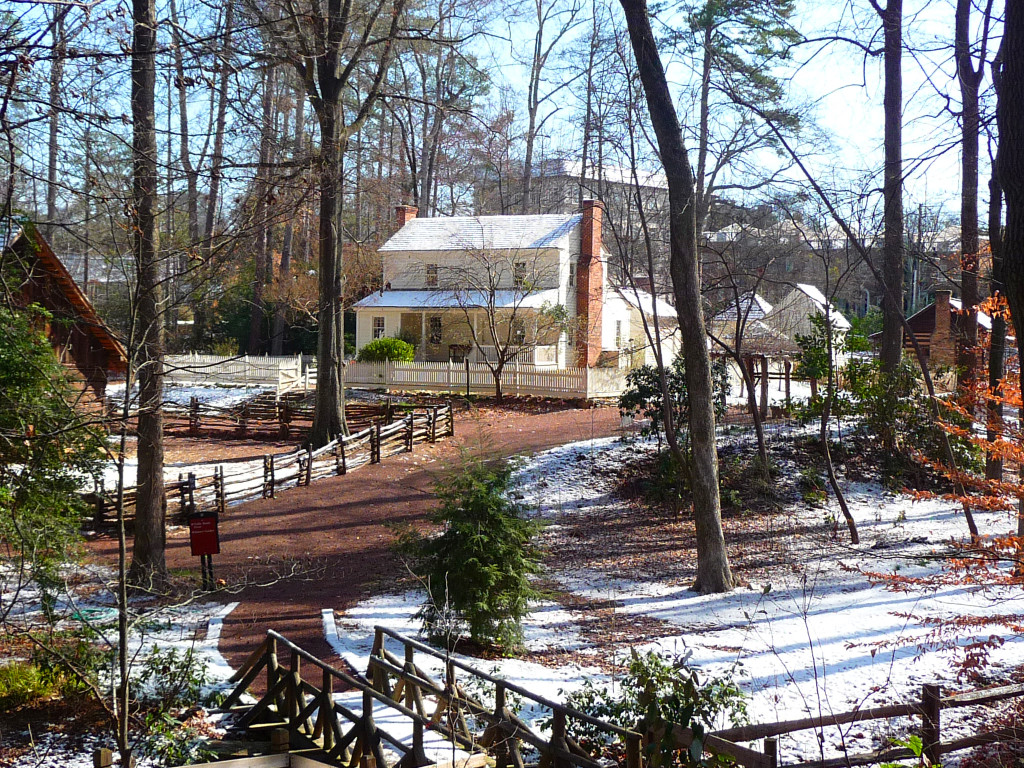Last semester, Oglethorpe class embarked on a historical journey, without leaving Atlanta. As part of the service-learning course, Research into Economic History of Georgia and the South, students worked with faculty members, Dr. Peter Kower and Dr. Richard Cook, and the Atlanta History Center, to apply theories in economics to research and answer questions about a key part of Atlanta’s history.
“This summer course focused on investigating the economic impact of the arrival of the railroad in the northern part of Georgia, specifically in DeKalb and Floyd Counties,” explained Dr. Kower. “Students considered which economic factors were necessary for farmers to move from simple self-sufficiency into specializing in commercial crops, cotton and grains, for sale in the growing market. One well known economic historian refers to this type of market expansion as Smithian growth, based on the insights of Adam Smith.”
For this course, the Atlanta History Center served as the ideal community partner and offered an unusual real-life learning experience. Students were able to research the Smith Family, who operated a Civil War era farm, by stepping back into time. Now located on the grounds of the Atlanta History Center, the Smith Family Farm includes “a plantation-plain house built in the 1840s by the Robert Smith family. Originally located east of Atlanta…the house survived the destruction in and around Atlanta during the Civil War,” according to the history center. Authentic reenactors onsite add to the ambiance, allowing visitors, and the Oglethorpe students, to interact directly with history and witness their stories come to life.
Hoping to enhance the permanent exhibit, the curator with the help of the Center’s archivists challenged the Oglethorpe students to unearth insights into the economic lives of the Smith Family, both during and after the Civil War. Specifically, they were interested in the effects of inflation, caused by the Confederacy printing money to finance the war. Students also attempted to determine the relative wealth of the Smith Family, in comparison to other families during the mid-to late 1800s, and even to see how the Smiths would be compared to families today.
During their research, students had the unique opportunity to dive into historical archives and learn how to read and interpret primary sources. They spent days in the archives, reading diaries and other historic documents that contributed to the economic profile they pieced together. The students’ review and interpretation of those documents became a key part of their learning experience and service contribution.
In addition to traditional class requirements, service-learning courses require that students complete 20 hours of service for a community partner or agency. Service-learning provides students with hands-on opportunities to give back by contributing to community partners’ missions, as well as to use the knowledge they’ve gained in the classroom. After their service experience, students are then able to apply it back to the topics and theories discussed in class.
As the students began to understand more about the Smith family and its contemporaries, they uncovered that, although the family was in the top 10 percent of land owners at the time, they actually ran a rather simple farm house, lacking the luxuries that the larger antebellum plantations to the south could afford. Students concluded that the family lived a full life, producing most of the basic necessities and were able to use the farm’s surplus to barter for anything else the might need.
The students were able to contribute their research and new insight to the Atlanta History Center, but additional research remains to be done. Hopefully, future economics service-learning classes will be able to continue the project, and possibly replicate the process for other areas at the history center. Dr. Kower also is interested in Sweetwater Mill, a textile mill burned during the Civil War, as another potential subject for students’ investigation into the economic history of Georgia and the South.
“With this service-learning course model, our students are able to explore that intersection of history and economics, while also giving back to our community.”

